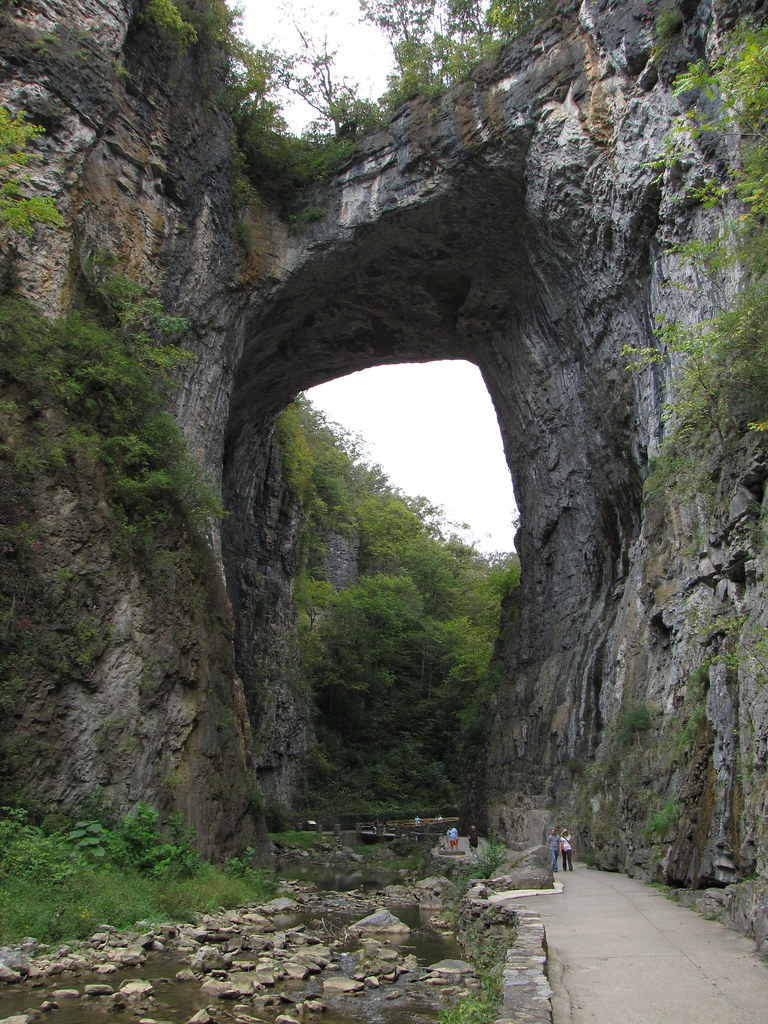The Trust for Public Land (TPL) recently completed the transfer of Natural Bridge State Park to the Commonwealth of Virginia’s Department of Conservation and Recreation. Although it had been managed as a Virginia State Park since 2016, the 1,500 acre property was privately owned until the transfer. The property is known for its iconic 215-foot tall limestone gorge, carved by Cedar Creek below it. The Natural Bridge, which is a designated National Historic Landmark, has driven visitors to the Rockbridge County area since the 18th century. This story makes for a prime example of using the resources on the land to your advantage when looking for creative financing for a land conservation project.
The land and the Natural Bridge was slated to go for auction in 2014, putting it at high risk for development. Making use of funds from the Virginia Clean Water Revolving Loan Fund, the Virginia Dept. of Environmental Quality and Virginia Resources Authority made a loan to prevent development. Known as State Revolving Funds or “SRFs” – a loan program capitalized by funding from the Environmental Protection Program, and then matched with state funds – SRF’s are typically used by local governments for a variety of grey infrastructure projects, but EPA allows states to authorize the loan funds for land conservation, and Virginia has taken advantage of that authority.
In 2016, the Natural Bridge property began to be operated as a state park despite remaining privately owned, with TPL taking over title to the property and assuming the remaining loan balance from the Virginia Conservation Legacy Fund until the property could be transferred to the state.
Now that TPL has transferred the deed to the Virginia Department of Conservation and Recreation, the park will continue to run as an official Virginia State Park. In addition, a conservation easement has been placed on the property in accordance with DEQ’s requirements for the use of the loan.
Partners of the Chesapeake Conservation Partnership can use this as a model for projects by taking advantage of possible revenue sources generated by certain properties. In the case of Natural Bridge property, the entrance fee to visit the bridge and gift shop sales contributed to paying off the revolving loan. Combined with the low interest rates offered by the state loans, it is easy for certain projects to pay for themselves.

